What is high ast and alt. Elevated ALT and AST in an Asymptomatic Person: What the Primary Care Doctor Should Do
What should a primary care doctor do when a patient has elevated liver enzymes (ALT and AST) but no symptoms? This article explores the potential causes and the doctor’s approach to managing such a case.
Understanding Elevated ALT and AST
Alanine aminotransferase (ALT) and aspartate aminotransferase (AST) are enzymes found primarily in the liver. When the liver is damaged or inflamed, these enzymes can be released into the bloodstream, leading to elevated levels in a blood test. While an elevated ALT or AST can be a sign of liver injury, it’s important to understand that these enzymes can also be elevated due to various other factors beyond just liver disease.
Potential Causes of Elevated ALT and AST
When a patient presents with elevated ALT and AST levels but no symptoms, the primary care doctor must investigate the underlying cause. Some common reasons for elevated liver enzymes include:
- Viral hepatitis: Infections with hepatitis viruses (A, B, C, D, or E) can cause inflammation and damage to the liver, leading to elevated ALT and AST.
- Fatty liver disease: Conditions like non-alcoholic fatty liver disease (NAFLD) and non-alcoholic steatohepatitis (NASH) can cause a buildup of fat in the liver, leading to inflammation and elevated liver enzymes.
- Alcohol consumption: Excessive alcohol intake can lead to fatty liver and liver inflammation, resulting in high ALT and AST levels.
- Medications: Certain medications, including some antibiotics, anti-seizure drugs, cholesterol-lowering medications, and over-the-counter pain relievers, can cause elevated liver enzymes as a side effect.
- Autoimmune disorders: Conditions like autoimmune hepatitis, primary biliary cholangitis, and primary sclerosing cholangitis can cause liver inflammation and elevated ALT and AST.
- Genetic disorders: Inherited metabolic disorders, such as hemochromatosis (iron overload) and Wilson’s disease (copper accumulation), can lead to liver damage and elevated liver enzymes.
Diagnostic Approach for the Primary Care Doctor
When a patient presents with elevated ALT and AST but no symptoms, the primary care doctor should follow a systematic approach to determine the underlying cause:

- Obtain a thorough medical history: Ask about any current or past medical conditions, medications, alcohol consumption, and family history of liver disease.
- Perform a physical examination: Look for any signs of liver disease, such as jaundice, abdominal tenderness, or hepatomegaly (enlarged liver).
- Order additional laboratory tests: These may include viral hepatitis serologies, autoimmune markers, iron studies, and a comprehensive metabolic panel to assess other liver function parameters.
- Consider imaging studies: Depending on the suspected cause, the doctor may order imaging tests such as an ultrasound, CT scan, or MRI of the abdomen to evaluate the liver’s structure and appearance.
- Refer to a gastroenterologist or hepatologist: If the cause of the elevated liver enzymes is not readily apparent or the patient requires specialized care, the primary care doctor should refer the patient to a specialist for further evaluation and management.
Management and Follow-up
Once the underlying cause of the elevated ALT and AST has been identified, the primary care doctor should work with the patient to develop a appropriate management plan. This may include:
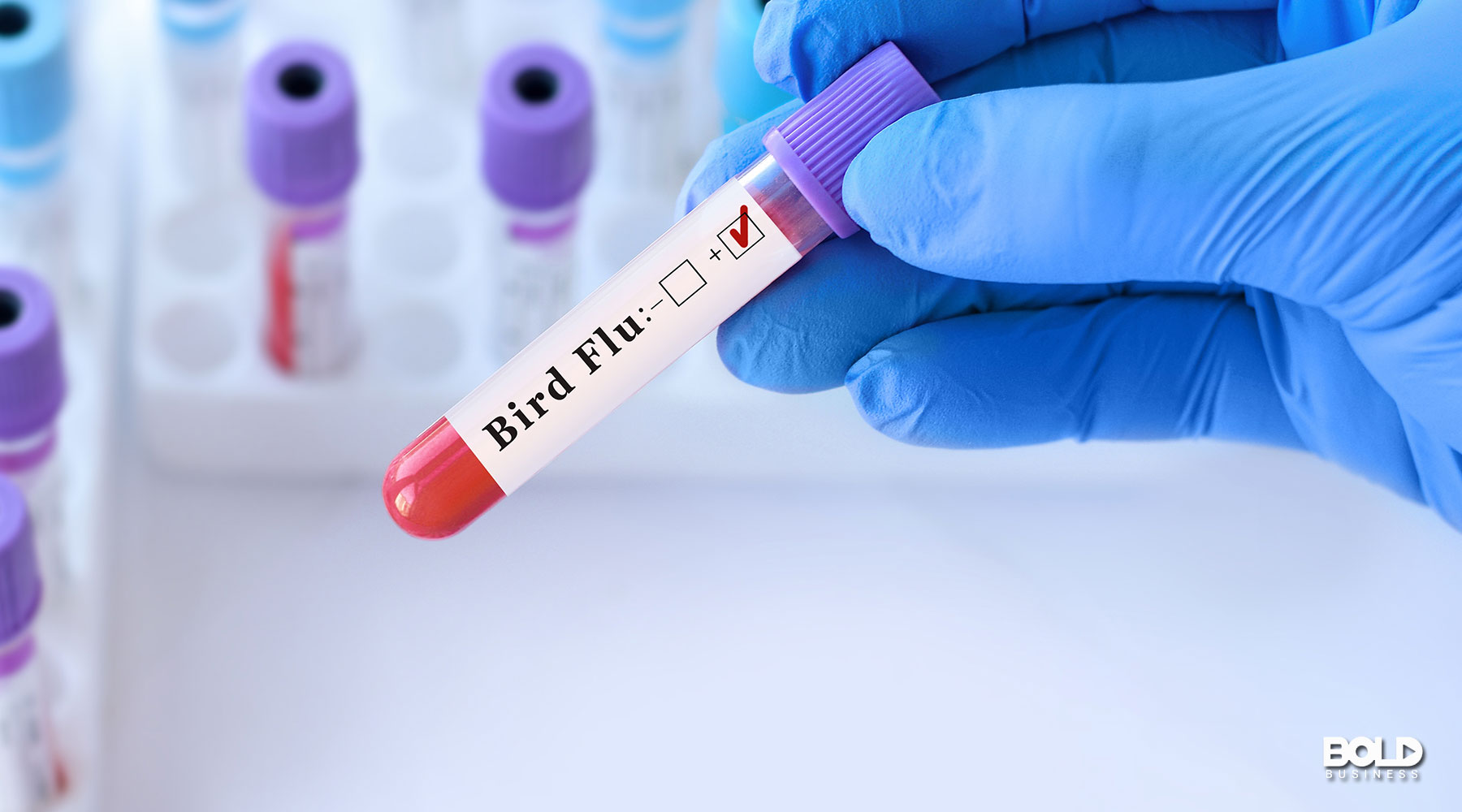
- Lifestyle modifications: If the elevated liver enzymes are due to conditions like NAFLD or alcohol-related liver disease, the doctor may recommend changes in diet, exercise, and alcohol consumption.
- Medication management: If the elevated enzymes are caused by a medication, the doctor may consider adjusting the dosage or switching to an alternative drug.
- Monitoring and follow-up: The doctor should continue to monitor the patient’s liver enzymes and overall liver health through regular check-ups and laboratory testing.
Importance of Early Detection and Intervention
Detecting elevated ALT and AST in an asymptomatic patient is valuable, as it allows the primary care doctor to identify and address any underlying liver disease or condition before it progresses. Early intervention can help prevent or delay the development of more severe liver complications, such as cirrhosis or liver failure. By taking a comprehensive approach to investigating the cause of the elevated liver enzymes, the primary care doctor can ensure that the patient receives appropriate care and management to maintain their liver health.

Role of the Primary Care Doctor
The primary care doctor plays a crucial role in the management of patients with elevated ALT and AST. They are responsible for conducting the initial evaluation, ordering the necessary tests, and determining the underlying cause. Additionally, the primary care doctor can provide ongoing monitoring, lifestyle counseling, and coordination of care with specialist providers, such as gastroenterologists or hepatologists, when necessary.
Conclusion
Elevated ALT and AST in an asymptomatic patient can be a diagnostic challenge for the primary care doctor. By understanding the potential causes, following a systematic approach to investigation, and collaborating with specialists when needed, the primary care doctor can effectively manage these cases and ensure the patient receives the appropriate care to maintain their liver health.
What Does It Mean When Your ALT Is High? > Personalabs
Getting elevated alanine aminotransferase (ALT) or serum glutamic-pyruvic transaminase (SGPT) in your liver function test can be distressing. But what high ALT means depends on factors such as the medications you’re taking, underlying liver disorders, chronic drinking, and consumption of herbal medicine.
Understanding the roles of ALT and its sudden spike in the bloodstream will provide clues on your liver health. Read more about it in the next few lines.
What Is an ALT Lab Test?
An ALT blood test measures the alanine aminotransferase (ALT) enzyme level to detect liver damage caused by diseases like hepatitis or lifestyle factors such as habitual drinking. The enzyme is an ideal marker for health conditions concerning the liver as it is released to the bloodstream when the liver sustains injuries or undergoes dysfunction.
However, ALT bloodwork does not produce conclusive results on its own. Therefore, it is usually taken as part of the hepatic function panel test and comprehensive metabolic panel, along with other blood tests for other liver enzymes.
In some cases, you might take the ALT blood test first, followed by other labwork to confirm a suspected condition or the other way around. These tests include:
- AST (aspartate aminotransferase) test
- GGT (gamma-glutamyl transferase) test
- ALP (alkaline phosphatase) test
- ALB (albumin) test
- Total bilirubin blood test
ALT Blood Test: Preparation and Results Meaning
Measuring ALT levels is done through blood work, wherein you will have to visit a laboratory for a phlebotomist to collect your blood sample.
Although there is no special preparation before the blood collection for an ALT blood test, you may need to fast if you take it alongside other tests. For example, if it is part of a liver function panel where a bilirubin lab test is involved, you will need to abstain from food and drinks for about 8 hours before the test.
What Does It Mean When Your ALT Is High?
Your ALT level is considered high if it exceeds the normal range of 0 to 44 IU/L.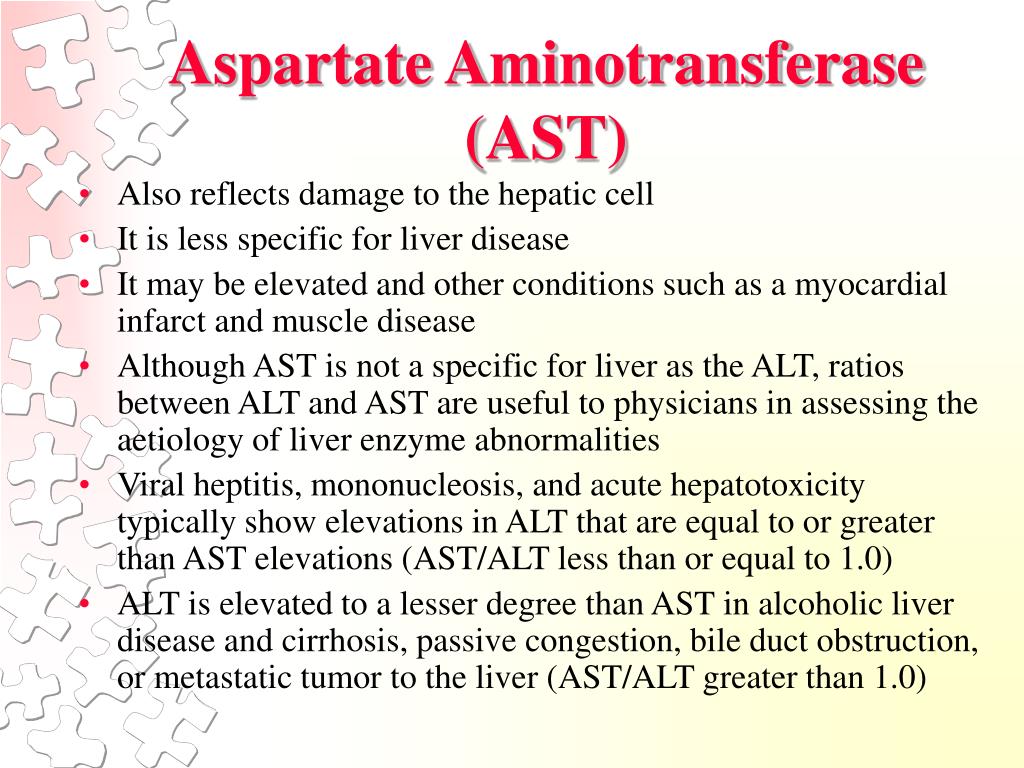 Some laboratories may present a slightly different reference interval, but a test result of 55 IU/L or above could indicate liver problems. If the value exceeds the upper limit of the normal range, it could suggest liver disease or cirrhosis (tissue scarring).
Some laboratories may present a slightly different reference interval, but a test result of 55 IU/L or above could indicate liver problems. If the value exceeds the upper limit of the normal range, it could suggest liver disease or cirrhosis (tissue scarring).
However, other factors could contribute to the increase of ALT in your blood – not just liver disorders. Here are common causes of high ALT:
Infections
Patients diagnosed with hepatitis, whether A, B, or C, typically have elevated ALT liver enzymes. Hence, if you got a test value exceeding the normal range of ALT and are showing hepatitis symptoms, consult your doctor to secure the proper diagnostic lab tests.
Aside from hepatitis, studies have also shown that those with infectious mononucleosis have elevated liver enzymes, including ALT. So your doctor may proceed to check for swelling in your tonsils and liver on top of common infection symptoms.
Did you know? Hepatitis can be prevalent among older kids. That’s why it’s vital to detect hepatitis in children at the onset of the symptoms. This allows for better treatment and speedy recovery.
That’s why it’s vital to detect hepatitis in children at the onset of the symptoms. This allows for better treatment and speedy recovery.
Medications
Various drugs can cause high ALT levels, such as anti-seizure medications (phenytoin, valproic acid, carbamazepine, etc.), antidepressants, antipsychotics, cholesterol-lowering drugs, heparin therapy, acetaminophen, and many others. So if you’re taking these medications, make sure to let your doctor know.
Herbal Supplement
Herbal teas and supplements can also elevate your ALT. These include kava, chaparral, ephedra, skull cap, comfrey tea, and Yohimbe. While traditional medicine may suggest that these supplements benefit your health, consult with your healthcare provider before taking them regularly.
Alcohol and Toxins
Alcohol has been known to cause fatty liver tissues and induce inflammation. As a result, binge drinking elevates liver enzymes like ALT and causes gradual hepatic damage. Other substances like cocaine and poisonous liquid also increase ALT, as they generate high levels of hepatic toxicity.
Diseases
Medical conditions associated with high ALT include hemochromatosis (iron overload), fatty liver disease, cirrhosis, thyroid disease, diabetes, Celiac disease, cancer, hemolysis, etc. Heart disease has also been associated with elevated ALT.
If you have a family history of liver disease, there’s a higher chance of getting elevated ALT in your bloodwork, especially with an unhealthy lifestyle. So opt for a CMP 14 blood test to be included in your annual wellness checkup to detect liver problems early.
What Should I Do if My ALT Is High?
Seeing an elevated ALT in your test results can be alarming, especially if it’s far off the upper limit and if the other parameters also go beyond the normal range. But you can lower this liver enzyme (along with the others) through the following ways:
- Get Tested for the Cause of Increased ALT
Finding the root cause of your elevated ALT, whether it’s a disorder or a medication, is imperative for the right course of action in normalizing it. In addition, be mindful of symptoms you may have been experiencing, especially those related to liver problems. These could include abdominal pain and swelling, appetite loss, fatigue, dark urine, pale stool, vomiting, itchy and easily bruised skin, and jaundice (yellow eyes and skin).
In addition, be mindful of symptoms you may have been experiencing, especially those related to liver problems. These could include abdominal pain and swelling, appetite loss, fatigue, dark urine, pale stool, vomiting, itchy and easily bruised skin, and jaundice (yellow eyes and skin).
Your doctor will assess your symptoms and request appropriate liver function tests. Once the condition is diagnosed, you will be given proper treatment. You will most likely take another ALT test, among others, to see if you already have low ALT levels within the normal range.
- Limit Cholesterol and Avoid High-Carb Foods
Changing your diet typically tops the lifestyle changes that improve your liver health. In the case of high ALT, shifting to a low carbohydrate diet has a beneficial impact on normalizing the liver enzyme’s production.
In a 2015 study, high carbohydrate intake of fructose-rich food and beverages significantly increased ALT. On the other hand, a low-carb diet decreases the enzyme twice as a low-fat diet.
While carbohydrates seem to trigger the spike in liver enzymes, fat, specifically bad cholesterol, doesn’t do any favor. High cholesterol overloads liver function, increases ALT, and even promotes the risk of liver cancer. That said, it’s best to avoid fatty foods such as whole-milk dairy, red meat, and those smothered in oil.
Think you have high cholesterol? You will know for certain when you take the comprehensive lipid profile blood test. Doing so allows you to have a base record of your lipid levels, helping you assess your risk for heart and liver disease.
- Drink a Cup of Coffee a Day
Coffee comes with plenty of health benefits. However, it can be subjective depending on your physical and mental state. But in the case of liver function, studies have shown that drinking coffee aids in preventing high serum ALT.
Moreover, a 2015 study says that drinking coffee reduces your risk for liver cancer and chronic liver disease, bordering cirrhosis. So secure one cup of coffee daily, especially in lieu of alcohol. If you have anxiety disorders, consult your doctor first, as too much coffee can aggravate the condition.
So secure one cup of coffee daily, especially in lieu of alcohol. If you have anxiety disorders, consult your doctor first, as too much coffee can aggravate the condition.
- Be More Physically Active
Exercise promotes liver health and allows you to lose weight. By being physically active for about 30 minutes daily, you improve your metabolism, which involves the oxidation of fatty acids. This helps ease liver function and, by extension, prevents injuries that lead to increased liver enzymes in the blood.
Consistent physical activity is particularly helpful for those with fatty liver. In a 2018 review, evidence shows that regular exercise aid liver functions in people with nonalcoholic fatty liver disease (NAFLD), from damage reduction to improved insulin resistance.
- Avoid Alcohol and Smoking
It’s no secret that alcohol can cause severe liver damage if consumed habitually. Heavy drinkers are prone to alcoholic liver disease and alcoholic hepatitis. On top of that, alcohol is also the most significant risk factor for liver cirrhosis.
On top of that, alcohol is also the most significant risk factor for liver cirrhosis.
Smoking is another habit you should shake off if you plan to lower your serum ALT. According to an article published in the Journal of Hepatology, cigarette smoking aggravates liver problems and contributes to the impediment of hepatic treatment. This remains true with secondhand smoke.
If you’re having trouble leaving these unhealthy habits behind, seek help from professionals and support from your social circle.
- Rethink Taking Supplements, Drugs, or Herbal Medicines
As herbal teas and vitamin supplements (iron and vitamin A) can cause liver toxicity, make sure to avoid them if you have elevated liver enzymes. Likewise, consult your doctor regarding taking prescribed medications and be sure not to take them beyond the recommended dosage. For example, acetaminophen (a drug for fever and pain) can induce acute liver damage if taken in large amounts.
Other Frequently Asked Questions
Which is worse: high AST or ALT?
Liver enzymes AST and ALT are often compared to better understand liver health.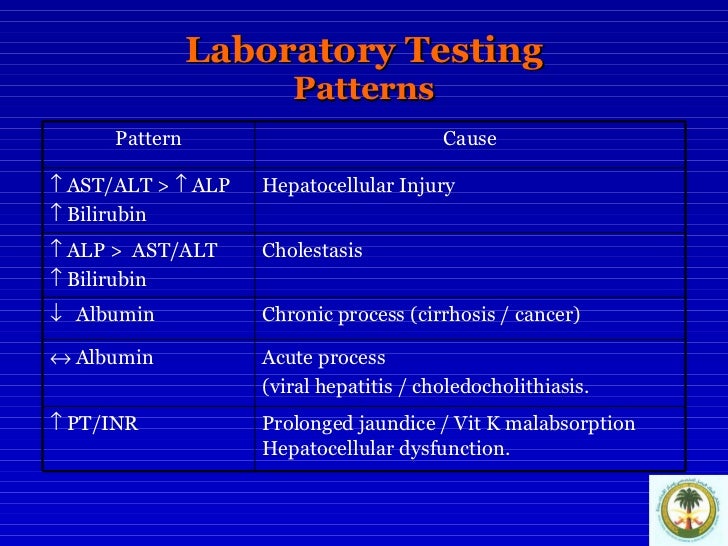 Getting high lab values for both AST and ALT indicates the severity of the liver problem. Generally, if AST is significantly elevated than an already high ALT, it could suggest cirrhosis, which can lead to liver failure.
Getting high lab values for both AST and ALT indicates the severity of the liver problem. Generally, if AST is significantly elevated than an already high ALT, it could suggest cirrhosis, which can lead to liver failure.
How quickly can ALT levels drop?
On average, ALT decreases significantly after treatment and lifestyle changes in about four weeks. This depends on how consistent you are with the necessary adjustments. For example, if you have given up alcohol, your ALT could start to drop in a week and continue to do so with continuous abstinence.
Can ALT levels go down on their own?
Unless you change your diet, start exercising, and eliminate unhealthy habits like heavy drinking and smoking, serum ALT levels will not decrease. Additionally, if the elevation of the liver enzyme is due to a severe liver disorder, failing to address and avail of proper treatment will only contribute to high ALT remaining unchanged.
Bottom Line
When your ALT levels are elevated, it’s certainly high time to check your liver.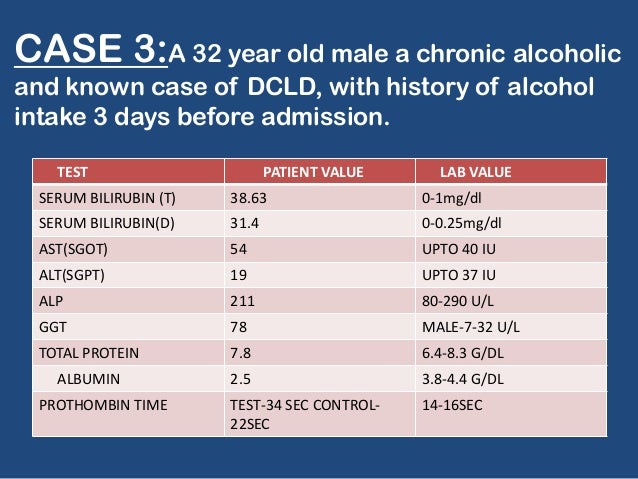 Doing so allows you to seek proper treatment and employ the necessary lifestyle adjustments, such as changing your diet, getting tested for a particular disorder, and being physically active. If symptoms of liver damage are observed, consult your doctor immediately.
Doing so allows you to seek proper treatment and employ the necessary lifestyle adjustments, such as changing your diet, getting tested for a particular disorder, and being physically active. If symptoms of liver damage are observed, consult your doctor immediately.
What High ALT Levels Mean and How to Lower Them
High levels a liver enzyme known as ALT in the blood can indicate liver issues. Implementing these strategies may help lower ALT levels.
Alanine aminotransferase (ALT) is an enzyme found inside liver cells. Liver enzymes, including ALT, help your liver break down proteins to make them easier for your body to absorb.
When your liver is damaged or inflamed, it can release ALT into your bloodstream. This causes your ALT levels to rise. A high ALT level can indicate a liver problem, which is why doctors often use an ALT test when diagnosing liver conditions.
Several things can cause high ALT levels, including:
- nonalcoholic fatty liver disease (NAFLD)
- over-the-counter pain medications, especially acetaminophen
- prescription medications used to manage cholesterol
- alcohol consumption
- obesity
- hepatitis A, B, or C
- heart failure
- hereditary hemochromatosis, an inherited condition that can lead to liver disease due to iron overload
- thyroid disorders
- some muscle disorders
- celiac disease
Rare causes
Other causes of high ALT levels that are rare include:
- autoimmune hepatitis
- alpha-1 antitrypsin deficiency, an inherited condition that can lead to lung and liver disease
- Wilson’s disease, an inherited condition that can cause a buildup of copper in the body
Regardless of what’s causing your elevated ALT levels, it’s important to work with your doctor to find and address the underlying cause. But in the meantime, there are a few things you can try that may help lower your ALT levels.
But in the meantime, there are a few things you can try that may help lower your ALT levels.
Drink coffee
Several studies have found that coffee may have a protective effect on the liver and that drinking it can lower liver enzymes.
A 2017 review found that drinking anywhere from 1 to 4 cups of coffee per day can help lower ALT levels and reduce the risk of liver disease and cancer.
More recently, the results of a 2021 meta-analysis of 19 observational studies involving 222,067 people also suggested that coffee consumption was associated with lower ALT.
Another recent study into the benefits of coffee on liver health found that all types of coffee appeared to lower the risk of liver disease.
Here are 9 other science-backed benefits of drinking coffee.
Consume more folate or take folic acid
Consuming more folate-rich foods and adding a folic acid supplement to your diet are both linked to lower ALT levels.
While the terms “folate” and “folic acid” are often used interchangeably, they aren’t quite the same.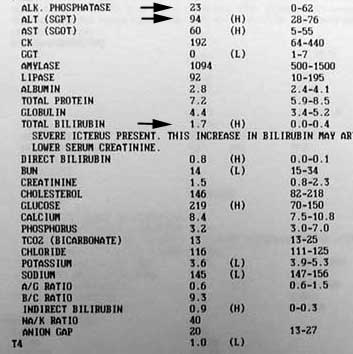 They’re two different forms of vitamin B9.
They’re two different forms of vitamin B9.
Folate is a naturally occurring form of B9 found in certain foods. Folic acid is a synthetic form of B9 used in supplements and added to some processed foods. Your body processes them in different ways, too.
While they aren’t quite identical, both folate and folic acid have benefits when it comes to liver health and lowering ALT.
Studies have linked folate deficiency to increased ALT levels and liver damage and found that folic acid appears to reduce ALT in people with liver damage.
A 2017 study found that folic acid appeared to be just as effective as, if not more than, silymarin treatment in lowering liver enzymes in children with drug-induced liver injuries from antiepileptic therapy.
To help lower ALT levels, consider adding more folate-rich foods to your diet, such as:
- leafy greens, including kale and spinach
- asparagus
- legumes
- Brussels sprouts
- beets
- bananas
- papaya
You can also try taking a folic acid supplement. Most folic acid supplements contain doses of either 400 or 800 micrograms. Aim for a daily dose of 800 micrograms, which is the equivalent of 0.8 milligrams.
Most folic acid supplements contain doses of either 400 or 800 micrograms. Aim for a daily dose of 800 micrograms, which is the equivalent of 0.8 milligrams.
This is the dose involved in many studies looking at the link between folic acid and ALT levels.
Make changes to your diet
Adopting a healthier diet can help lower ALT levels and reduce your risk of liver disease.
A 2019 clinical trial compared the effects of a low sugar diet and a typical diet in adolescent boys with NAFLD. Sugar in the diet intervention group was limited to less than 3 percent of the total daily caloric intake.
After 8 weeks, those in the diet group had lower liver enzymes and a greater reduction in liver fat.
Reducing the amount of fat and carbohydrates can also help treat and prevent NAFLD, a common cause of high ALT.
To improve liver health and help lower ALT, you don’t necessarily need to make drastic changes to your diet. Start by trying to eat at least five servings of fresh fruits and vegetables per day.
You can also try incorporating these tips into your weekly meal planning:
- Limit fruits and vegetables served with high calorie sauces or added sugar and salt.
- Eat fish at least twice a week, ideally those high in omega-3 fatty acids, such as salmon or trout.
- Opt for fat free or low fat milk and dairy products.
- Replace saturated and trans fats with monounsaturated and polyunsaturated fats.
- Choose fiber-rich whole grains.
- Opt for lean animal proteins, such as skinless chicken or fish.
- Swap fried foods for baked or roasted ones.
- Snack on nuts, which have various health benefits and have been shown to lower liver enzymes in people with NAFLD.
Learn more about treating fatty liver disease with food.
There is no specific medical treatment for high ALT. Treatment, if any, depends on what’s causing the increase.
Of the 10 percent of people in the United States estimated to have high ALT, less than 5 percent have serious liver disease.
For most causes of high ALT, treatment involves lifestyle changes, such as exercise, a modified diet, and reducing alcohol intake.
Depending on the results of your liver panel and your medical history, your healthcare professional may recommend checking them again at a later date.
If they’re very high or if you have risk factors for liver disease or other symptoms, your doctor may recommend further testing or an appointment with a liver specialist to help diagnose the underlying cause of your high ALT.
Depending on what your healthcare professional suspects, they may recommend any of the following:
- blood tests to check for other conditions, such as hepatitis B and C as well as diabetes
- liver ultrasound
- abdominal CT scan
- biopsy
- thyroid stimulating hormone (TSH) test
- creatine kinase (CK) test
- lipid panel
- iron studies to rule out hereditary hemochromatosis
Contact a doctor if a blood test shows you have high ALT. Based on the results of your liver panel, the doctor will advise you on the next steps.
Based on the results of your liver panel, the doctor will advise you on the next steps.
A high ALT level is usually a sign of some type of liver issue. It’s important to work with your doctor to find the underlying cause of your elevated ALT, even if you don’t have any symptoms.
Lowering your ALT will require treating the cause, but certain dietary changes can help.
When the liver goes wrong: a gastroenterologist named 4 common reasons why ALT and AST are elevated in the blood
- Health
However, the growth of these main “liver” markers in the blood test does not always indicate problems.
April 25, 2022
- Source:
- Getty Images
A biochemical blood test is considered one of the main ways to find out if the liver copes with the load of “wrong” nutrition, alcohol, and medication. This will be told by such indicators in the analysis as ALT (alanine aminotransferase) and AST (aspartate aminotransferase) – these liver enzymes are among the first to respond to malfunctions of the organ.
– If there is an increase in both ALT and AST, this means that the liver cells are destroyed and the enzymes from them enter the blood. (…) An increase in AST and ALT means that an inflammatory process is taking place in the liver and its cells are being destroyed. If the indicators are above the norm, you need to contact a gastroenterologist, – gastroenterologist Maria Lopatina wrote in her telegram channel, adding that the upper limits of the norm may differ in different laboratories and one must focus on those established where the analysis was taken.
The doctor named the 4 most common causes of increased liver values.
Chronic viral hepatitis
With an increase in ALT and AST in the blood, viral hepatitis B and C are always excluded first. This is very important, as they can be asymptomatic, while destroying the liver. Mandatory tests: HBsAg – hepatitis B and Anti-HCV – hepatitis C.
Non-alcoholic fatty liver disease
When fatty liver cells destroy them, ALT and AST in the blood rise and steatohepatitis develops.
Fatty liver disease is suspected if:
Waist circumference ≥94/≥80 cm in men/women;
Blood pressure 130/85 mmHg And more, or the person is taking antihypertensive drugs;
Fasting glucose level of 5.6 mmol/l or more, or the person is taking hypoglycemic drugs;
Serum triglycerides more than 1.7 mmol/l;
High-density lipoprotein (HDL) level less than 1.0/1.3 mmol/l in men/women.
Drug-induced liver injury
All drugs that we take by mouth pass through the liver. The more drugs we take, the more likely it is to be damaged. This group includes both herbal preparations and dietary supplements. Liver damage can occur immediately or after several weeks.
Alcohol
According to Russian clinical guidelines, a safe dose for the liver in women is 20 grams of ethanol per day, for men – 40 grams. Regular excess of this dose leads to the development of alcoholic hepatitis and an increase in ALT and AST.
Determining the ethanol content in 100 ml of a drink is very simple: the percentage of alcohol in the drink must be multiplied by 0.8. Thus, 100 ml of 40% vodka contains 40×0.8=32 grams of ethanol, and 100 ml of 12% wine contains 12×0.8=9.6 grams of ethanol.
The doctor specifies that there are other reasons for the increase in ALT and AST in the blood, but these four are the most common.
Read also
When an increase in the indicator is not a cause for alarm
It happens that an increase in the level of “liver” indicators may not be associated with a problem in the work of our main “filter”. According to gastroenterologist Maria Lopatina, this may be the case if only the AST index is elevated.
– AST is found not only in the liver, but also in the heart, muscles, kidneys, brain and pancreas. If AST levels are elevated and ALT is normal, causes that are not related to damage to liver cells should be ruled out. For example, active training for all muscle groups, the doctor clarifies.
But if the liver values are below normal in the blood test, in most cases this is not a cause for serious concern. According to the gastroenterologist, a decrease in their level can occur during pregnancy, starvation and a reduced content of vitamin B6.
What other indicators of a blood test can be used to understand that something is wrong with the liver, read HERE.
Signs of liver problems that can be seen in the mirror
According to doctors, the liver does not hurt in the usual sense of the word, especially at first – specific symptoms of the disease appear when things have gone too far. As the head of the MIBS outpatient department, gastroenterologist Iyri Alaya said, liver diseases are often accompanied by various digestive disorders:
Increased flatulence;
Feeling of fullness in the stomach;
Rapid satiety after eating;
Loss of appetite;
Dryness and bitterness in the mouth;
Attacks of nausea and vomiting;
Constipation or diarrhoea.

And the most famous sign of liver problems is yellowness of the skin, mucous membranes and sclera, which indicates an increase in the level of bilirubin (bile pigment) in the blood.
Text author: Anastasia Romanova
Reading today
Named spice that slows down aging and increases collagen production glasses” and 7 more exercises for pumping the brain in old age
Why you shouldn’t wipe your face with a towel — a doctor’s opinion
Psychologist Labkovsky told how random phrases from childhood destroy our lives
By what blood test indicators can you understand that your liver is on the verge of failure
- Health
Doctors call our main filter organ “silent”: even if the liver is not all right, it will not get sick. Some pathologies can develop over the years, and if they are not detected in time, the consequences can be very deplorable.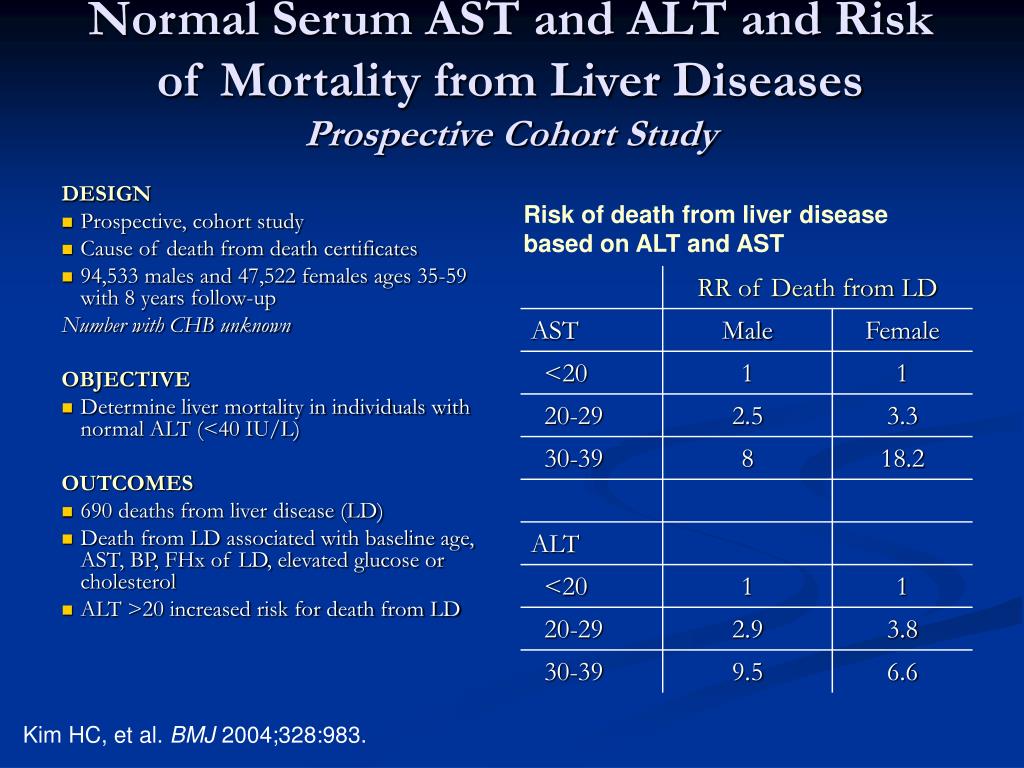
April 18, 2022
- Source:
- Getty Images
It is not for nothing that the liver is called the main filter organ: after all, everything that enters our body is absorbed into the bloodstream, and then passes through the filtration in the liver. Therefore, like no other body, it feels all the consequences of our wrong lifestyle: the habit of eating fatty and high-calorie foods, drinking alcohol, smoking cigarettes. Also, do not forget about the load that the body experiences while taking medications: the liver takes the entire blow from the breakdown of chemical compounds.
Why the liver does not hurt
– This is due to the fact that there are no pain receptors in the liver itself. They are located in the capsule of the liver, which surrounds the organ. When the capsule is stretched due to an increase in the size of the liver itself, this already leads to pain, the doctor explains.
You may experience sudden sharp pain in the liver area due to an injury. For example, this can happen from a strong blow to the stomach. If in this case the capsule ruptures, there is a high probability that internal bleeding will begin.
For example, this can happen from a strong blow to the stomach. If in this case the capsule ruptures, there is a high probability that internal bleeding will begin.
Sometimes the pain also occurs during physical activity, for example, while running. In people who play sports irregularly, pain in the right hypochondrium is caused by intense filling of the liver with blood – the organ sharply increases in size and the capsule stretches.
Read also
About the most common diseases
– If we talk about the rating, then in the first place I would put fatty degeneration of the liver. With this diagnosis, the organ tissue is replaced by adipose tissue. Many have probably heard about the foie gras dish – this is a goose or duck liver with fatty degeneration, or fatty hepatosis, which is provoked in a bird by a special “diet”. Unfortunately, many people are so accustomed to unhealthy eating that they develop a similar disease, says Maxim Rykov.
If you do not change your menu in time, then fatty degeneration is replaced by what is called the frightening word “cirrhosis”.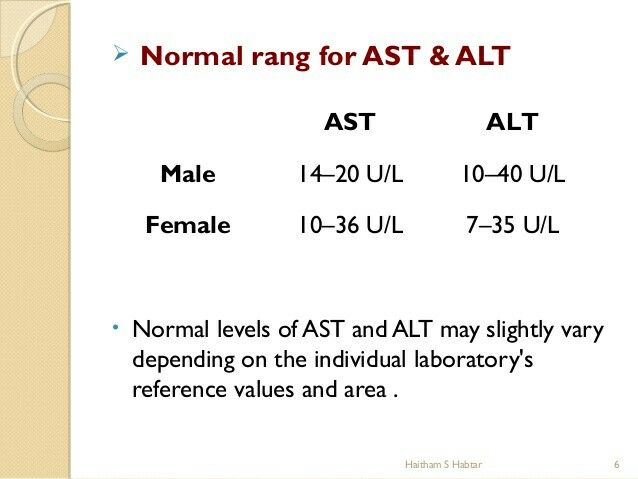 In this case, the liver tissues are replaced by connective tissue, the organ can no longer fully perform its functions.
In this case, the liver tissues are replaced by connective tissue, the organ can no longer fully perform its functions.
Interesting fact
The liver has a very large margin of safety. It can regenerate well, regenerating itself on its own. But until a certain point! With frequent use of alcohol, the safety margin of the liver is enough for about 15 years. For some people, it may take 5-10 years longer, it all depends on the individual characteristics of the body.
But this does not mean, , that all other organs have the same margin of safety, primarily the brain and intestines. They can suffer from alcohol much earlier. Therefore, doctors advise drinking as little as possible, and ideally completely abandoning alcohol.
It is important to mention tumor diseases of the liver.
– I mean both metastatic liver damage, when metastases of cancer or tumors appear on it, the primary localization of which falls on another organ, and primary tumors – hepatocellular carcinoma or adenocarcinoma of the liver, which begin to develop directly in the organ.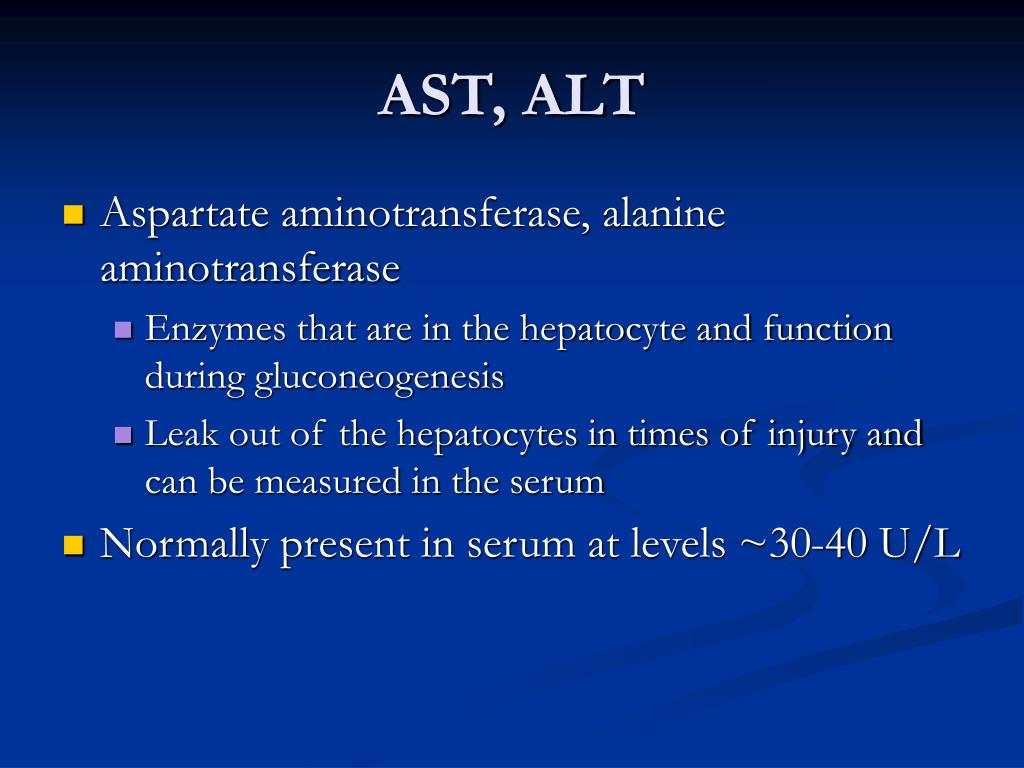
It should be understood that liver metastasis in malignant tumors is actually an incurable situation. That is, the patient is incurable. With primary liver tumors, the prognosis is also unfavorable; liver and pancreatic cancer are one of the most aggressive forms of cancer. Therefore, it is so important to undergo regular examinations and take tests,” the expert explained.
Not only alcohol and junk food destroy the liver
Many are well aware that the liver suffers from fatty foods, alcohol and frequent medication. However, for some reason, people often forget about cigarettes. Nicotine destroys not only your lungs, but also the liver, because it is absorbed into the blood, and it will inevitably be “driven” through the body’s main filter.
– This is not only about cigarettes, but also about all nicotine-containing products: vapes, electronic cigarettes, sticks, which have been very popular over the past few years. Although they have a lower burning temperature and no smoke, still has a toxic effect on the liver. Moreover, we still do not know how electronic smoking will affect health in 10 or 15 years,” says the doctor.
Moreover, we still do not know how electronic smoking will affect health in 10 or 15 years,” says the doctor.
Read also
How to understand that something is wrong with the liver
Some external signs can sometimes give out problems with the liver:
the skin has acquired a yellowish tint. It can range from pale yellow to bright orange, which is associated with impaired bilirubin metabolism.
The whites of the eyes can also become yellow , mucous membranes can also change color.
– These are the most important indicators, which very often the patient himself does not pay attention to, even when he looks at himself in the mirror. Most often, this is noticed by a person’s relatives or his entourage,” Maxim Rykov explains.
If you notice that your skin or the whites of your eyes have turned yellow, then this is a good reason to make an appointment with a general practitioner or hepatologist.
As for the pain syndrome, unpleasant sensations appear quite rarely. The pain is usually dull, but sometimes more acute, appears in the right hypochondrium, may increase at night. Most often, the increase is explained by the psychological effect of pain perception, since at night, when a person is not busy with any business, is in peace and quiet, the pain is subjectively perceived as more severe, although its true intensity remains the same.
By the way
There is a myth that fasting and drinking warm mineral water helps to cleanse the liver. This is not true. In order for the liver to truly cleanse, a person must fast for 1.5 months, drink only pure water without any additives or drugs. Naturally, this is impossible. Therefore, you need to understand that saving the liver is not in fasting, but in leading a healthy lifestyle, trying to eat right and refrain from alcohol and cigarettes.
Many liver diseases can be asymptomatic, so laboratory test results are necessary and informative in the following cases:
you need to check for abnormal liver function;
assessment of severity of liver injury required;
need to monitor the course of liver disease and understand how the treatment is going;
clarification of the diagnosis is required.

– Some biochemical tests are called liver tests. They can measure the amount of enzymes entering the bloodstream or assess liver function by examining hepatobiliary excretion. Other tests are used to assess the synthesizing function of the liver, says Marina Fursova.
Read also
About informative indicators in analyzes
notransferases. They are one of the first to react to the fact that the liver undergoes some changes or suffers from frequent alcohol intake. AST and ALT are considered the two most important indicators of liver damage, although ALT is more specific than AST. So, in some cases, AST is directly compared with ALT and their ratio is calculated, which is can clarify why exactly the organ is damaged. Blood AST is also often compared with other tests such as alkaline phosphatase (AP), total protein, and bilirubin to determine a specific form of liver disease;
Biochemical blood test for bilirubin.
 Bilirubin is a bile pigment produced by the breakdown of hemoglobin proteins, aging red blood cells. It is prescribed for liver diseases, violation of the outflow of bile and diseases of the biliary tract, the appearance of yellowness of the eyes and skin. This indicator is gives the doctor an understanding of how a person’s liver works;
Bilirubin is a bile pigment produced by the breakdown of hemoglobin proteins, aging red blood cells. It is prescribed for liver diseases, violation of the outflow of bile and diseases of the biliary tract, the appearance of yellowness of the eyes and skin. This indicator is gives the doctor an understanding of how a person’s liver works; Alkaline phosphatase. Elevated levels of this hepatocyte enzyme suggest cholestasis , a condition in which bile cannot flow from the liver into the duodenum. The activity of alkaline phosphatase is sometimes increased in healthy people, this does not necessarily indicate any pathology. In order to correctly interpret the change in the activity of alkaline phosphatase, a comprehensive assessment of the results of other tests, as well as other medical data, is needed;
Gamma-glutamyl transpeptidase (GGTP) . This is a protein found in the liver and pancreas, its activity in the blood increases with various liver pathologies, as well as with alcohol abuse .
 It reflects the state of the tissues of the liver and biliary tract;
It reflects the state of the tissues of the liver and biliary tract;Prothrombin time (PT) and international normalized ratio (INR) are significant indicators of the ability of the liver to synthesize fibrinogen and vitamin K, on which blood coagulation depends. In chronic liver diseases, an increase in INR or PT in indicates progression of liver failure . INR or PV levels do not increase in mild hepatocellular dysfunction and are often normal in cirrhosis;
Whey proteins. Most whey proteins are synthesized by hepatocytes (liver cells) and help in the diagnosis of specific diseases. They also usually rise in response to damage (eg, inflammation) to various tissues, so the rise may be non-specific and unrelated to liver disease.
See also
“In order to diagnose various liver problems, a blood chemistry test is often sufficient. An increase in the level of ALT, AST and bilirubin will indicate that it is time to make an appointment with a hepatologist,” says Maxim Rykov.



 Bilirubin is a bile pigment produced by the breakdown of hemoglobin proteins, aging red blood cells. It is prescribed for liver diseases, violation of the outflow of bile and diseases of the biliary tract, the appearance of yellowness of the eyes and skin. This indicator is gives the doctor an understanding of how a person’s liver works;
Bilirubin is a bile pigment produced by the breakdown of hemoglobin proteins, aging red blood cells. It is prescribed for liver diseases, violation of the outflow of bile and diseases of the biliary tract, the appearance of yellowness of the eyes and skin. This indicator is gives the doctor an understanding of how a person’s liver works; 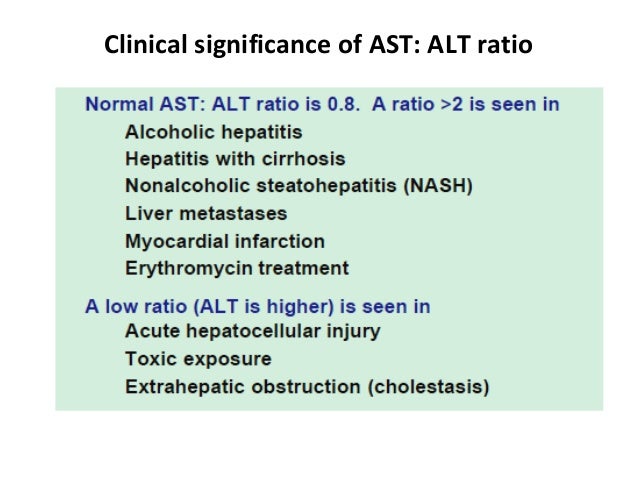 It reflects the state of the tissues of the liver and biliary tract;
It reflects the state of the tissues of the liver and biliary tract;